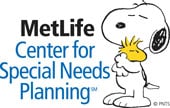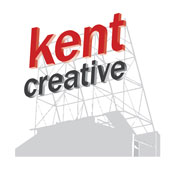Presentation Accessibility
The AUCD conference is an inclusive event where all attendees should be able to participate in all events. Presenters are asked to follow all presentation accessibility guidelines when designing and presenting at the AUCD Annual Meeting. Accessibility will be a part of the evaluation of all presenters.
Presentation accessibility guidelines are available on the following topics. Please see the "download materials" section at right for additional helpful materials.
Accessibility: Spoken or Audio Presentations
Individuals who are blind, deaf, have low vision, or hard of hearing may be present in your audience. Follow the guidelines below to ensure everyone can follow your presentation.
- If present, make sure that sign language interpreters have a copy of your presentation before you begin
- Presenters should describe slides and graphics briefly. For example: "This slide covers these three key points..." "This graph illustrates these key points."
- Avoid referring to items using words like "this, that, these, and those", unless you indicate what "this" means. For example: "This map shows..., These results indicate..." rather than "This shows..." People who can't see you pointing to a slide don't know that "this" used alone means
- Presenters should speak directly into the microphone. Do not cover your mouth when speaking
- Presenters should speak clearly at a moderate pace. This practice promotes understanding in the audience and allows sign language interpreters or CART transcribers time to translate what you are saying
- If a presentation includes a video. that video MUST be captioned
Individuals who are blind or have low vision may not be able to read standard sized print on your handouts. Be sure to bring appropriate numbers of your handouts in one or more of the following formats to ensure full participation in your session. Anyone presenting who does not have appropriately accessible handout formats available will be asked not to reference the materials in their presentation.
- Large Print
- Large print should be printed on single-sided 8.5" by 11" paper and stapled at the top left corner
- Use letter orientation, unless a visual element requires landscape orientation, to achieve maximum visibility
- Left justify all paragraphs and do not use columns
- Keep a one-inch margin on all sides
- Use 18-point font for all text, including body text, footers, page numbers, references, disclaimers, and labels on charts and graphs. Larger fonts may be used for headings. Individual users may request fonts larger than 18-point as an accommodation
- Use a bold serif font (such as Times New Roman) for body text and a bold simple sans-serif font (such as Arial) for headings and other information that is set apart from body text. Do not use any compressed fonts. Make lines heavy/thick in charts and graphs
- Use a minimum of 1.5 line spacing; use double spacing when possible
- Do not use small caps, italics, or all caps for text. Use initial caps and lower case for titles and text
- Use underlining for emphasis instead of italics
- Delete decorative graphics that do not contribute to the meaning of the information being presented
- Flash Drive
- Meeting participants who are blind or have low vision may prefer to copy text files of your presentations and have their screen readers or other computer software convert the materials
- Computer files in Rich Text or ASCII: "Rich Text Format" (RTF) is a standard formalized by Microsoft Corporation for specifying formatting of documents. RTF files are actually ASCII files with special commands to indicate formatting information, such as fonts and margins
- Braille
- The National Library Service Resource Directories list sources of Brailed materials. For more information, visit the Library of Congress' website. Registered AUCD attendees needing Brailed materials must indicate the requirement on their conference registration form; presenters should check with AUCD to determine if meeting attendees have indicated a need for Brailed materials
Accessibility: PowerPoint Presentations
PowerPoint presentations are commonly used among session presenters as an effective way to display ideas and data. Because PowerPoint is a visual media, presenters should be sure to make presentations accessible to all audience members. For more information on creating accessible PowerPoint presentations, including an accessible template, download this PowerPoint presentation. [![]() , 84KB]
, 84KB]
- Text content
- Title fonts should be 44 pt. or greater. Text fonts should be 36 pt. or greater
- Don't try to cram too many slides into your presentation. Allow your audience time to read slides.
- Place no more than 6 lines of text on a slide (excluding columns).
- Many people with disabilities use text-based screen reading software and computer devices.
- Note that graphics often cannot be read with screen readers and other text-based devices.
- Graphic content
- Replace graphics with text whenever possible.
- If graphics are used, include a detailed explanation of the meaning of that charts or graphic in a descriptive text-only slide included immediately after the graphic slide. Note that the meaning of the graphic is needed, not a description. For example:
- No: "Chart with blue and red bars."
- Yes: "Data from this chart illustrates that people with disabilities report spending more time in the emergency room than people without disabilities."
- Avoid:
- Slide transitions
- Busy slide backgrounds
- Chart filler patterns
- Over-crowding text
- Color schemes providing low contrast
- Charts without text descriptions
- Videos that are not captioned
Poster presenters should consider all possible audience participants when creating the poster, including those who are blind or have low vision, those who are deaf or hard of hearing, and those with mobility or physical challenges.
- Keep tacks and push pins off the floor; they can puncture wheelchair and scooter tires
- Bring a CD or flash drive file of your poster in text or descriptive PowerPoint format for attendees who are blind or have low vision
- Offer to describe your poster to attendees who are blind or have low vision
- If you have access to a laptop computer with voice output software, prepare a brief description of your poster for listeners who are blind or have low vision
- Consider modifying your poster font and layout to make it accessible to attendees with low vision. Read "Guidelines for Creating Accessible Printed Posters" [
 , 935KB] for information on modification techniques
, 935KB] for information on modification techniques - If your poster includes video of any kind, you must have captions available for that video
Accessibility: Person First Language
AUCD requires that all presenters use person first language at all times during their presentation. This means that the person is emphasized first, and the disability noted second. For example:
Use: person with a disability Not: disabled person
Use: woman who is blind Not: blind woman
For more information on person first language, consider the following resources:
- http://www.disabilityisnatural.com/peoplefirstlanguage.htm
- http://www.communityinclusion.org/projectdocs/nsip/watch-yr-language.doc
Contact Crystal Pariseau with any questions you have about ensuring your presentation is accessible to all participants at the AUCD Annual Meeting.







